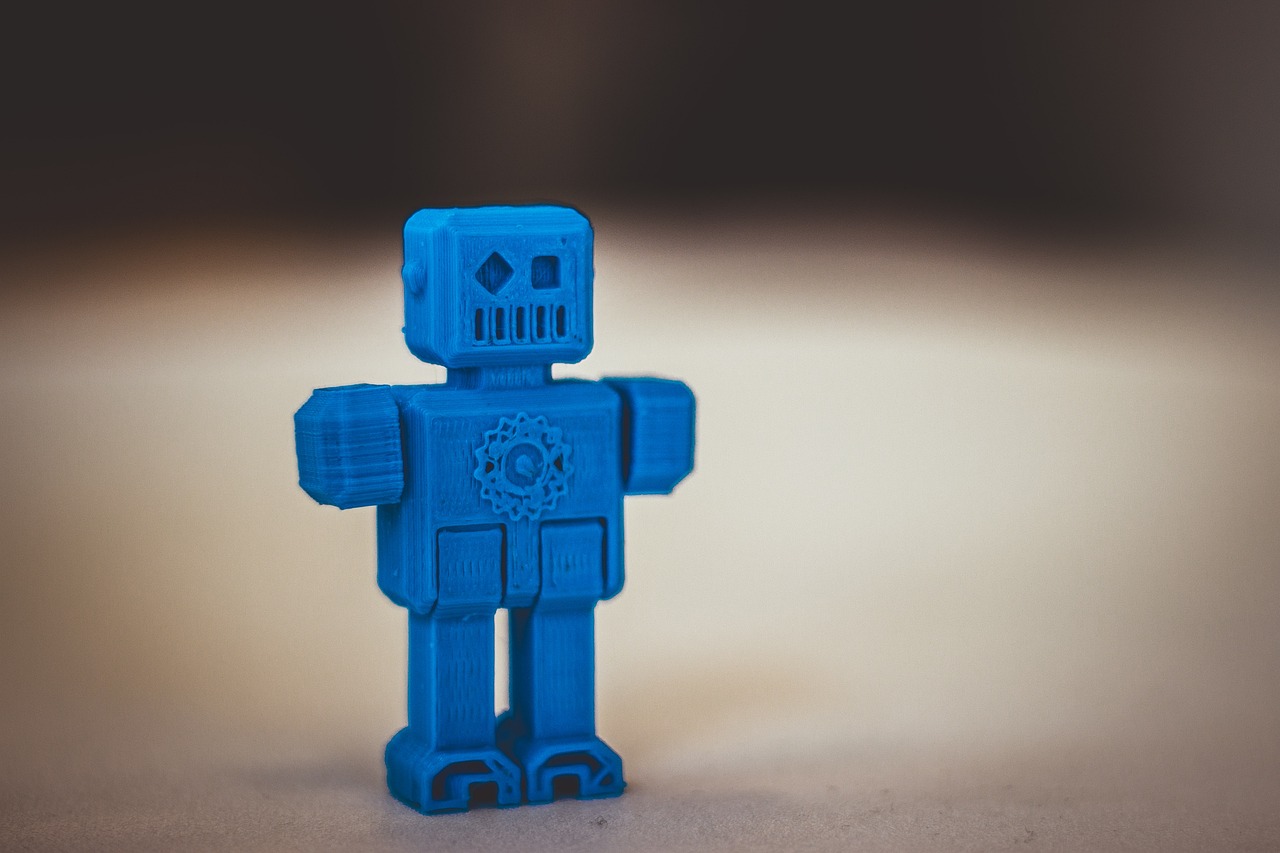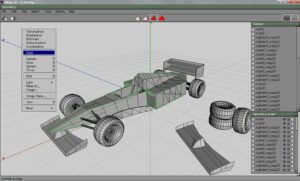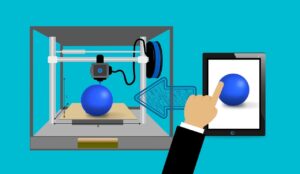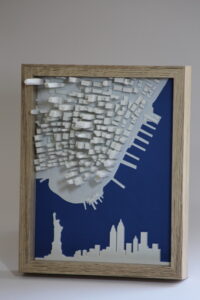3D modeling is getting more and more trendy. People everywhere are designing and sharing their own special creations. If you’re a pro or just have some creative flair, there are now tons of tools to get started in 3D modeling. Here, we’ll look at how to make and share free 3D models.
Tech has made it easier to get into 3D modeling. No pricey software or hardware needed anymore! Now, there are lots of free online platforms and software options to explore 3D modeling.
One option is Tinkercad. It’s a web-based platform with easy tools for 3D modeling. It’s great for beginners, with a user-friendly interface and drag-and-drop features. But it’s also advanced enough for experienced designers.
Another part of creating and sharing free 3D models is finding a community. Join online forums or social media groups dedicated to 3D modeling. You can learn from others’ experiences, collaborate on projects, and show off your own creations.
When you create and share 3D models, think about licensing options. Creative Commons licenses let you decide how your creations can be used and shared. But you can also go for more restrictive copyright protections.
What is 3D modeling?
3D modeling has completely changed industries like gaming, architecture, and manufacturing. By using 3D modeling software, people can design and modify objects in a virtual world with amazing accuracy. With these tools, they can form complex objects with shapes and textures, bringing their ideas to life.
Not just for professionals, nowadays anyone can jump into 3D modeling. Programs like SketchUp Free give newbies an easy-to-use interface and a lot of tools for making 3D models. You can start from zero or import existing models, tweak them, and embellish them.
An inspiring story is that of Ian Davis. He was an average high school student, but his enthusiasm for dinosaurs was out of the ordinary. Using 3D modeling software, he crafted realistic dinosaur models. His work got recognized by paleontologists all over the world.
His replicas provided valuable information about dinosaur anatomy and behavior. They’ve been used in research papers and museum exhibits, making Ian one of the most youthful members of the paleontology field.
Benefits of 3D modeling
3D modeling provides plenty of advantages that can revolutionize how we make and share visuals. With its power to bring ideas to life in a virtual world, this technology has opened up new artistic possibilities for experts and novices. Here are the main benefits of 3D modeling:
- Flexibility: Designers can change and adjust their works easily, conserving time and money.
- Precision: It enables artists to make realistic and correct representations of objects, unparalleled by other technologies.
- Cost-effectiveness: Companies can save lots of money when creating virtual models instead of physical ones.
- Collaboration: Models can be shared and edited by multiple people or teams, making collaboration simple even across far distances.
- Multimedia integration: 3D models can be blended with animations, videos, and interactive elements to make communication and engagement more interesting.
- Educational opportunities: Students can explore complex concepts in a more immersive and hands-on way with 3D modeling.
Also, 3D modeling technology keeps evolving quickly. New program tools and strategies are always being developed, broadening the potential of this technology.
To understand the transformative power of 3D modeling, people and businesses must accept this technology. By doing so, they can discover a world of creative possibilities and stay competitive in a dynamic market. Do not miss the chance to use the power of 3D modeling – start discovering its potential now!
Overview of free 3D modeling tools
Unlock your creative potential and start creating 3D models with the multitude of free 3D modeling tools available! From Blender, Tinkercad, SketchUp, FreeCAD, Meshmixer, and Fusion 360, there’s something for everyone – no prior experience required. Plus, there are plenty of other unique tools to explore that cater to specific needs.
So don’t wait – join the world of artists, designers, and makers today and make your mark in 3D!
Steps to create a 3D model
Making a 3D model might look hard, but with the proper tools and help, anyone can! Here’s a step-by-step guide to assist you:
- Start by dreaming up and picturing your object or scene. Take a while to get reference images or drawings to show the result.
- Pick a 3D modeling software that works for you and your skill level. Options are paid and free – Blender, SketchUp, and Tinkercad are all popular.
- Once chosen, learn the system’s interface and primary functions. This could mean mastering how to travel in 3D space, use modeling tools, and move objects around.
- Begin building your model by making primitive shapes or importing them as your base. Use the software’s tools to add information, change shapes, and better the design.
- As you go, remember to save often and try different textures, materials, lighting effects, and camera angles to upgrade your model’s visuals.
- Online communities are great for learning more sophisticated techniques or figuring out common problems during modeling.
Pro Tip: Don’t be scared to experiment and think differently when making your 3D models. The more creative and unique your approach is, the more captivating the final result will be!
Tips for creating high-quality 3D models
Crafting top-notch 3D models demands a sharp eye and expertise. Here are 3 tips to make your models look amazing:
- Have a plan: Before you begin, take a moment to think about what you want to make. A clear goal will help you make better choices and ensure a solid model.
- Know the tools: Familiarize yourself with the 3D software or tools you’re using. Take the time to explore all features, shortcuts, and techniques. Understanding the tools will make you faster and more efficient.
- Light and textures: Lighting is key for giving your model realism. Try different lighting setups to get the desired result. Textures also boost the quality and give an extra professional look.
Furthermore, consider these two points:
Don’t rush: Take your time during each step in the modeling process. Hurrying can lead to blunders and forgotten details, which can affect the final product.
Pro Tip: Feel free to experiment and be creative when making 3D models. Push boundaries, try new stuff, and don’t be scared to be different – this is what separates your model from the rest. So go for it!
How to share 3D models
Sharing 3D models is a must for collaboration and creativity. Here’s a 5-step guide to make it simpler:
1. Choose File Format: Select a format that is widely compatible, e.g. .STL or .OBJ. This will ensure your model is accessible on different software and platforms.
2. Prepare Model: Optimize your 3D model. Reduce the polygon count, delete unneeded details, and check scaling. This helps with performance and compatibility.
3. Select Platform: Pick an online platform to share your 3D models. Examples include Sketchfab, Thingiverse and MyMiniFactory. Base your decision on the user base, features and community engagement.
4. Upload & Describe: Create an account (if required) and upload the model with its textures or materials. Give a detailed description that includes techniques used, inspiration and any instructions for printing or rendering.
5. Engage Community: Interact with the community on the platform. Respond to comments, give credit and provide feedback. Collaborating and interacting makes this creative space grow.
| Pro Tip: |
| When sharing 3D models, post static images and interactive previews for users to visualize before downloading or interacting directly – this enhances their experience! |
Conclusion
3D modeling has changed the way we design and create. From pros to newbies, everyone can craft and share their own free 3D models. This article showed us various tools and techniques to enter the world of 3D modeling.
We learned about the user-friendly 3D modeling software now available. Programs like Tinkercad and SketchUp let even those with no experience make their ideas come alive in three dimensions. These programs have handy features that make designing easier and let people build complex models rapidly.
Furthermore, we found many resources with free 3D models. Libraries like Thingiverse have loads of pre-made objects to download and modify. This can save time and teach us from existing designs, helping create a creative, collaborative community.
Lastly, sharing 3D models is simpler than ever. Sites like Cults3D and MyMiniFactory are platforms for designers to show their work and link up with others. Whether for personal or commercial use, these sites allow makers to easily share their creations with fellow 3D printing enthusiasts.
Frequently Asked Questions
FAQs for 3D Modeling for Everyone: How to Create and Share Free 3D Models
1. What is 3D modeling?
3D modeling is the process of creating a three-dimensional representation of an object or scene using specialized software. It allows you to create virtual 3D models that can be manipulated, modified, and viewed from different angles.
2. Do I need expensive software to create 3D models?
No, there are many free or affordable 3D modeling software options available. Some popular choices include Blender, SketchUp, and Tinkercad. These tools offer a wide range of features and capabilities, making them accessible to beginners and professionals alike.
3. Can anyone learn 3D modeling?
Yes, anyone with an interest in 3D modeling can learn and master it with practice and dedication. While artistic skills can be helpful, they are not mandatory. Many 3D modeling software programs provide tutorials and resources to help beginners get started.
4. How can I share my 3D models with others?
Sharing 3D models is easy, thanks to various online platforms and communities. You can upload your models to websites like Sketchfab and Thingiverse, where others can view, download, and even 3D print them. Social media platforms like Instagram and Twitter are also popular for sharing 3D models.
5. Are there any copyright considerations when creating and sharing 3D models?
Yes, it’s important to respect copyright laws when creating and sharing 3D models. If you are using existing designs or assets, make sure you have the necessary permissions or licenses. When sharing, clearly indicate any attribution requirements or usage restrictions for your models.
6. Can 3D models be used for practical purposes?
Absolutely! 3D models have practical applications in various fields, including architecture, engineering, product design, gaming, and animation. From prototyping and visualization to creating media and simulations, 3D models offer a versatile toolset for real-world applications.



